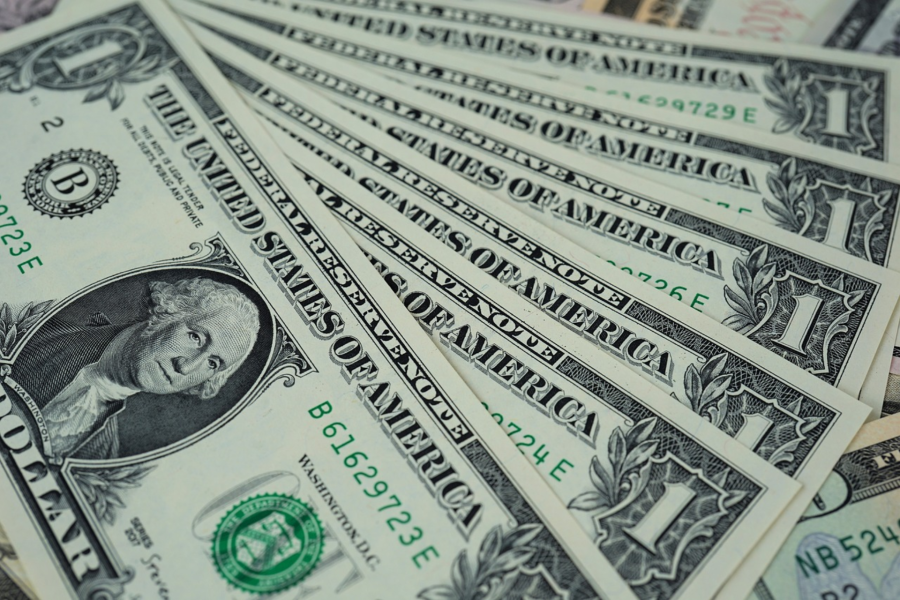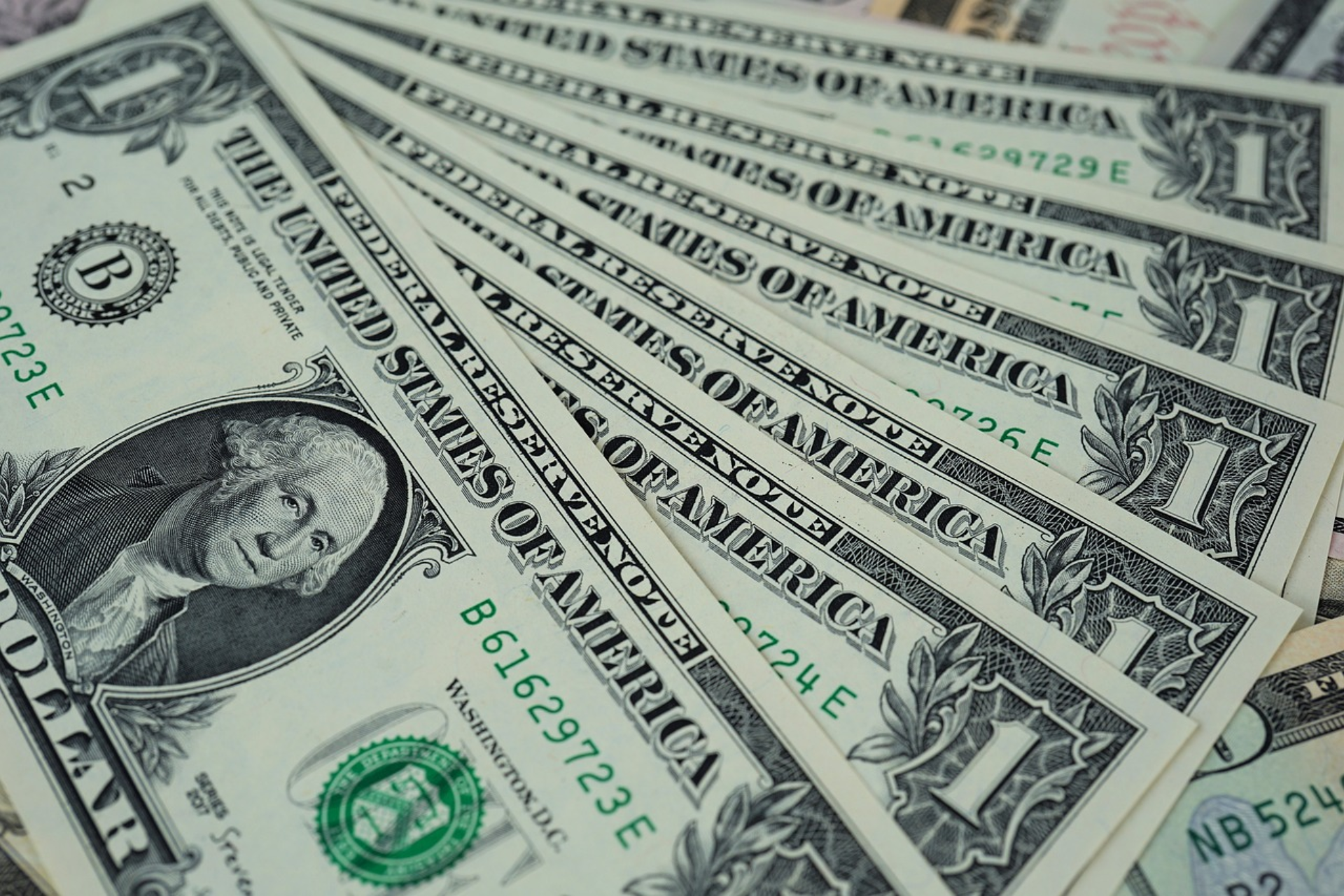
Dollar stood by 10-month highs as U.S. yields peak
The dollar stood by 10-month highs against a basket of major currencies on Tuesday, supported by U.S. bond yields scaling 16-year peaks.

Reuters: The dollar stood by 10-month highs against a basket of major currencies on Tuesday, supported by U.S. bond yields scaling 16-year peaks, while the yen tiptoed deeper into the intervention danger zone.
U.S. DOLLAR STOOD BY 10-MONTH HIGHS
A combination of resilient economic data, hawkish Federal Reserve rhetoric and a budget deficit to be financed by borrowing has the 10-year Treasury yield up more than 45 basis points (bps) in September to top 4.5% for the first time since 2007.
Rates markets are priced for an almost 40% risk of another Fed hike this year, against slimmer chances for another rise in Europe, and the difference has helped prop up a dollar many had bet would swiftly fall as the Fed signalled an end to hikes. The euro nursed Monday’s 0.5% drop and was parked by a six-month low at $1.0584. It’s on course for a 3% drop in the quarter, its worst quarterly percentage loss for a year. Sterling is also set to snap three quarters of gains, with a loss of 3.8% over the three months to September. It fell to a six-month low of $1.2195 overnight and traded only a whisker above that level in the Asia session.
ALSO READ: Who are the richest South Africans in the world today? – 26 September 2023
The U.S. dollar index touched its highest since November at 106.1 on Monday and was at 106.03 on Tuesday. “From here it eyes levels around 107.20,” said analysts at Australia’s Westpac bank. “Few currencies will resist the bullish dollar macro resiliency theme and the euro and Chinese yuan look more vulnerable than most.” Last week also brought more signs that central banks beyond the Fed are reaching the end of their hiking cycles. The Swiss franc has tumbled through its 200-day moving average to hit its lowest since June after the central bank surprisingly kept short-term rates on hold.
The yen has slowly but inexorably slid toward the 150-per-dollar mark as policymakers stuck with ultra-easy settings. The psychological level is seen as a likely red line for the finance ministry, whose warnings of possible intervention have stepped up in recent weeks. Traders have an eye on a Tuesday meeting of political leaders and Bank of Japan officials. The yen hit 148.97 to the dollar on Monday and last traded at 148.88. Rising commodity prices have provided some support to the antipodean currencies, though they have been mostly sideways for the past month or so. The Aussie was last steady at $0.6417 and the kiwi at $0.5962.
China’s yuan held at 7.3099, but only thanks to its trading band midpoint being fixed some 1400 bps firmer than forecast, leaving it very close to the weak end of its allowed trading band. U.S. consumer confidence and home sales data is due later on Tuesday, with slight weakening seen on both fronts though there are doubts that that could much dent the dollar. “Even if the U.S. economy is headed for a slowdown, the dollar could find support on the back of haven demand given broad based concerns over weak global growth,” said Rabobank’s senior FX strategist Jane Foley. “We remain of the view that the dollar is unlikely to weaken significantly until Fed rate cuts are firmly on the horizon,” she said. “We are currently trading fairly close to our long-held euro/dollar $1.06 target. We see downside risk to this.”
ALSO READ: Who is the richest person in the world today? Top 10 list – 26 September 2023
BRITISH POUND
Reuters: The pound dipped to its lowest in six months against the dollar and its weakest in four months against the euro on Monday, as jitters across asset classes hurt the currency already bruised by markets’ reevaluation of the Bank of England’s rate outlook. The BOE kept rates on hold last week – the first meeting at which it had done so since December 2021 – on the back of signs economic growth is slowing.
Market pricing prior to that meeting had reflected expectations that a further 25 basis point rate hike was all but certain for 2023, if not at that specific meeting, but, on Monday, expectations for a further rate hike this year were roughly 40%. That underscored a reversal of the trend earlier this year when the pound had been boosted by expectations that the Bank of England would keep raising rates longer than the European Central Bank and the Federal Reserve.
Sterling, on Monday, dropped as much as 0.25% to $1.2213 its lowest since March 2023, though later steadied to trade flat on the day at $1.2242. It is on track for a monthly loss of 3.4%, its most since September last year when it was battered by a strong dollar and then Prime Minister Liz Truss’s economic policies. The euro on Monday briefly touched 87.03 pence, its highest since May, and was last flat a touch below that level.
ALSO READ: App brings prosperity to farmers and communities
SOUTH AFRICAN RAND
Investec: With the dollar index trading at a new year-to-date high, the ZAR’s resilience is being tested. Note that the rand has found some support post the SARB’s policy update last week in a re-pricing of SARB rate cut risk, with the interest rates swaps and forward rate agreement curves steepening slightly to reflect a market that is pushing out expectations for eventual rate cuts. Still, it is doubtful that this will be sufficient for the rand to hold out against a stronger USD in the immediate short term, meaning the USD-ZAR will likely test the 19-handle again in the coming days.
GLOBAL MARKETS
Reuters: U.S. Treasury yields scaled fresh 16-year peaks on Tuesday, keeping the dollar near a 10-month high, as investors responded to the message from the Federal Reserve and other major central banks that rates are likely to stay elevated for longer. Asia-Pacific stock benchmarks sagged along with gold, with European equities also set for a weaker open, while crude oil continued to drift back from 10-month highs.
The yield on 10-year Treasury notes rose as high as 4.566%, a level not seen since October 2007. The U.S. dollar index – which measures the currency against six major developed market peers, including the euro and yen – ticked up 0.09% to 106.04, after reaching 106.10 overnight for the first time since Nov. 30. MSCI’s broadest index of Asia-Pacific shares slumped 0.66%. Tokyo’s Nikkei lost 0.93%, while Hong Kong’s Hang Seng slipped 0.98% and mainland Chinese blue chips retreated 0.4%.
U.S. stock futures pointed 0.35% lower, following a 0.4% rise for the S&P 500 overnight. Pan-European STOXX 50 futures fell 0.17%. Westpac strategists see risks skewed toward even higher yields in the near term, buoying the dollar. “We expect 10-year yields to establish a new, higher, range in coming weeks,” with a possible peak around 4.75%, they wrote in a client note. “Medium term, we would be looking to get long at some stage, but that time is not yet upon us.” The next target for the dollar index is 107.20, they said.
ALSO READ: Mother City launches new ‘This is Cape Town’ magazine
By contrast, IG analyst Tony Sycamore says technical indicators suggest a top for Treasury yields is close. “I think that over the next three or four days, we’re going to see yields start to come off, and U.S. equities could start to base,” he said. “But between now and then, it could get more ugly, that’s for sure.” Traders now put the odds of another quarter-point Fed hike by January at a coin toss, and have pushed the likely start of rate cuts to summer. Chicago Fed President Austan Goolsbee said on Monday that inflation staying entrenched above the central bank’s 2% target remains a bigger risk than tight Fed policy slowing the economy more than needed.
Minneapolis Fed President Neel Kashkari said more rate hikes are likely needed given the surprising resilience of the U.S. economy. The European Central Bank and Bank of England have also touted higher rates for longer in policy meetings since the middle of the month. The relative outperformance of the U.S. economy – with investors increasingly betting on a soft landing while growth in the euro zone and Britain stagnate – has buoyed the dollar against those currencies.
The euro sagged 0.08% to $1.0584, approaching the overnight low of $1.0575, a level last seen in mid-March. Sterling slipped 0.14% to $1.2196, taking it back toward Monday’s six-month low of $1.21945. The dollar also held near an 11-month peak of 148.97 yen from overnight, raising the risk of intervention by Japanese authorities. Gold drifted slightly lower to $1,914.15, extending its slump from above $1,947 over the past week. Crude oil remained weak amid concerns that fuel demand will be crimped by major central banks holding interest rates higher for longer, even with supply expected to be tight.
ALSO READ: Smart ID and passport COSTS in South Africa
Brent crude futures were down 38 cents at $92.91 a barrel, while U.S. West Texas Intermediate crude futures were trading 34 cents lower at $89.34.
Published by the Mercury Team on 26 September 2023
